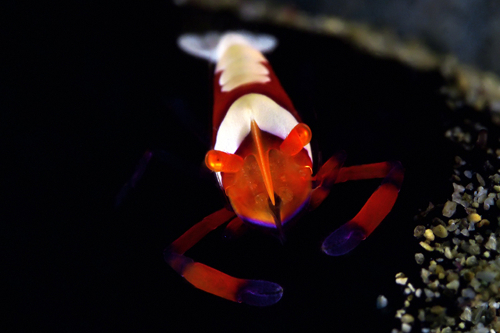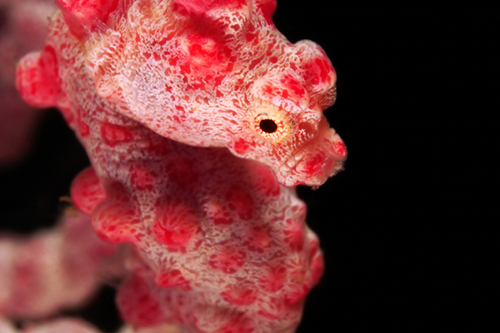A GUIDE TO ALL THINGS ANILAO
WHY DIVE ANILAO?
Credited with popularizing diving in the Philippines, Anilao is a haven for photographers and fans of macro life, critters, and blackwater dives. Anilao is on Luzon Island, three hours south of the capital, Manila. The municipality is covered in sprawling jungle and surrounding resorts with plenty of stunning greenery. Known for its diverse reefs, fish, critters, and nudibranchs, Anilao attracts divers to its crystal blue waters year-round.
ARRIVING AT ANILAO - HOW TO GET THERE
Visitors arrive at the Filipino- and English-speaking destination by first landing at Manila International Airport (MNL) and are usually met with a resort shuttle. The two- to three-hour ride from the airport brings guests to their resorts, liveaboards, and dive centers. Trips to Anilao are often combined with trips to Puerto Galera, Cebu, or Dumaguete.
DIVING IN ANILAO
A typical day in Anilao includes two morning dives before returning to the resort for lunch. Then, guests spend their afternoon at their resort relaxing poolside or exploring the jungle. After, there is an option for two late afternoon dives and one night dive. Night dives are considered a must in Anilao as they do not have strict time constraints and usually take place from house reefs. For guests looking for adventure, resorts can arrange blackwater dives.


Diving is made easy in the Filipino municipality—dive sites range from a 10- to 20-minute boat ride from most resorts. The healthy, colorful reefs keep divers in a state of awe, and the muck, blackwater, and night diving opportunities make them ready for more. Dives take place from bankgas, which are small boats that seat up to four divers and two to three crew members. The highly experienced crews keep divers safe while pointing out the vast marine life. Popular sightings include shrimp, crabs, nudibranchs, squid, cuttlefish, frogfish, pipefish, seahorses, wonderpus, blue-ringed octopus, and bobbit worms. With such unique experiences, Anilao is also beginner-friendly due to the often calm currents and shallow dive sites.
While Anilao is known for its small marine life, larger beings like jacks, turtles, and giant seahorses can be spotted. Sites like Manitit Point have strong currents that bring in larger life like reef sharks, hunting barracudas, and giant and bluefin trevally. In deep waters, there are rare sightings of small whale sharks.
With stunning jungles on land, guests also flock to the soft coral forests, which range from 70 to 130 feet deep. The untouched corals feature rare critters like seahorses and rhinopias.
TOP DIVE SITES
One of Anilao’s iconic dive sites is Twin Rocks, with vibrant life as shallow as 10 feet and as deep as 130. Photographers love this site for the macro life and wide-angle opportunities. Soft corals, jacks, jawfish, and more are just a few of the creatures spotted here.
Beatrice is popular with experienced divers who can brave the strong currents. With more wide-angle shots, Beatrice is known for swarms of anthias and stunning corals. Kirby’s Rock is another macro life mecca with a stunning wall and incredible visibility. For the muck diving fanatic, Secret Bay is a hot spot for mimic octopus, wonderpus, pipefish, and seahorses. Blackwater dive sites vary but spotting one-of-a-kind jellies, larvae, and invertebrates is a guarantee.

DIVE CONDITIONS AND WHEN TO VISIT
Waters are calm and warm year-round, ranging from 77°F to 81°F (25°C to 27°C) and a visibility of 40 feet to 50 feet (10m to 15m). The main season is from October to early June, with November and December as the peak. April and May tend to be the most crowded months for resorts. Monsoon season is in July and August, but dive sites can still be accessed.
WHERE TO STAY
Crystal Blue Anilao
Crystal Blue Anilao is set in the bay area and features accommodations for families, groups, and couples. Guests praise the resort for their dive facilities, which include a covered dive deck, rinse tanks, showers, camera rinse tanks, and a camera room.
Buceo Anilao
Buceo Anilao features a PADI-certified dive shop with Nitrox and air fills. The camera room includes eighteen workstations with air guns, rinse tanks, lockers, matted desks, and shelves. In addition to the iconic muck and macro diving Anilao is known for, Buceo brings guests to wreck and cave dives as well as weekly dive trips to Verde Island.
While Anilao itself doesn’t have much outside of diving and watersports, the resorts keep guests busy with karaoke, bars, spa treatments, and pools.
Ready for your Anilao adventure? Book with us today!